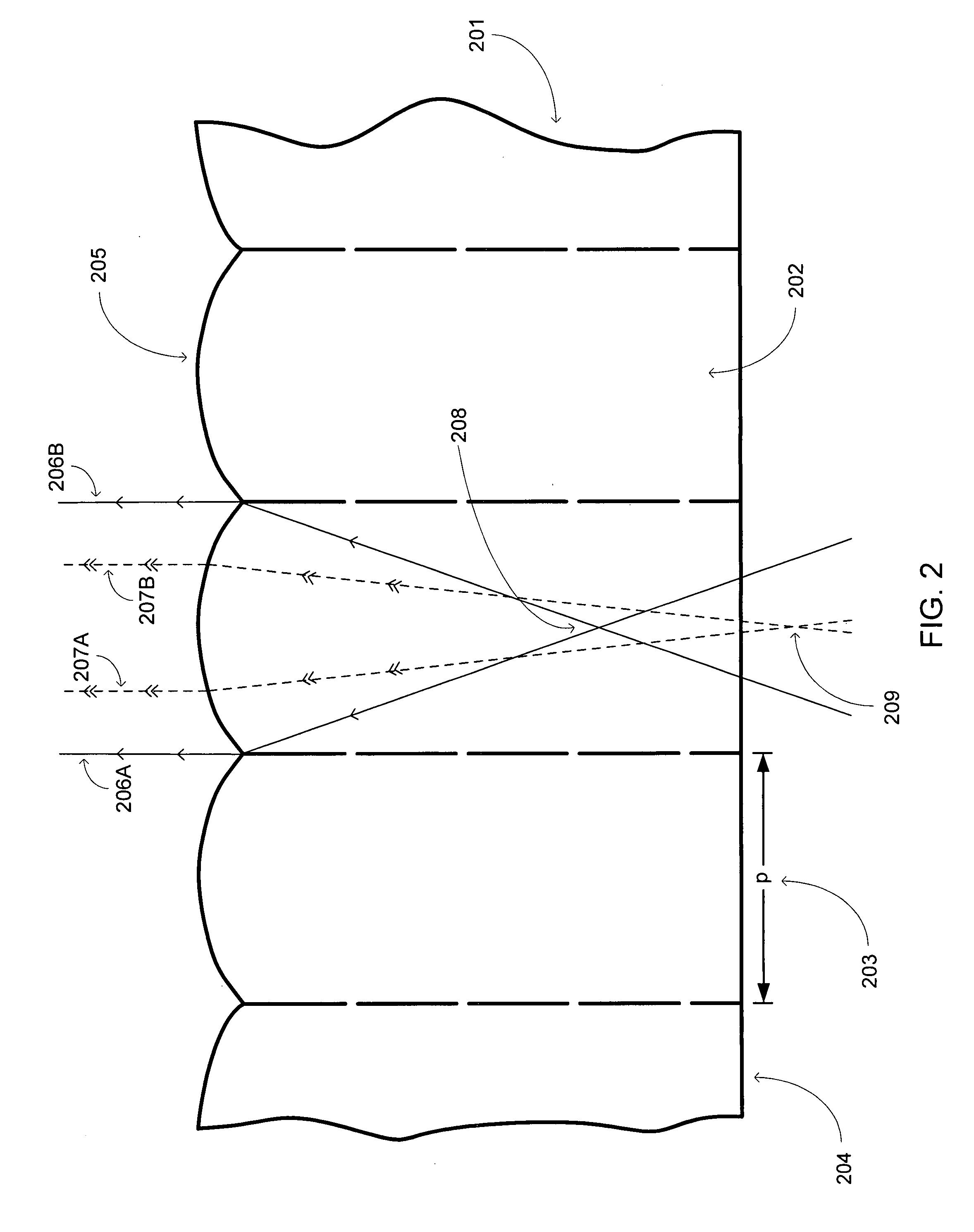Aperture correction for lenticular screens
a technology of autostereoscopic display and aperture correction, which is applied in the direction of instruments, sorting, coatings, etc., can solve the problems of lenticular screen, lenticular screen, and design employing lenticular screen, so as to reduce the numerical aperture and enhance the selection of images.
- Summary
- Abstract
- Description
- Claims
- Application Information
AI Technical Summary
Benefits of technology
Problems solved by technology
Method used
Image
Examples
Embodiment Construction
[0026]The following description and the drawings illustrate specific embodiments sufficiently to enable those skilled in the art to practice the system and method described. Other embodiments may incorporate structural, logical, process and other changes. Examples merely typify possible variations. Individual components and functions are generally optional unless explicitly required, and the sequence of operations may vary. Portions and features of some embodiments may be included in or substituted for those of others.
[0027]The present design combines the virtues of both refractive or lenticular autostereoscopic displays and raster barrier displays. The technique described herein vastly improves the image quality of an autostereoscopic display using refractive lenticular optics, with only a minor reduction in light output.
Lenticular Screens
[0028]Autostereoscopic display technology has been applied to flat panel displays with some success. There are two major variants—one using refra...
PUM
 Login to View More
Login to View More Abstract
Description
Claims
Application Information
 Login to View More
Login to View More - R&D
- Intellectual Property
- Life Sciences
- Materials
- Tech Scout
- Unparalleled Data Quality
- Higher Quality Content
- 60% Fewer Hallucinations
Browse by: Latest US Patents, China's latest patents, Technical Efficacy Thesaurus, Application Domain, Technology Topic, Popular Technical Reports.
© 2025 PatSnap. All rights reserved.Legal|Privacy policy|Modern Slavery Act Transparency Statement|Sitemap|About US| Contact US: help@patsnap.com



